A world of opportunity in dental research
Oral health plays an integral part in our overall health. However, oral diseases are prevalent worldwide, and health inequities mean that not everyone has access to the oral healthcare they need. Dental researchers are tackling these challenges and, as Dr Jennifer Webster-Cyriaque, Deputy Director of the National Institute of Dental and Craniofacial Research in the US, explains, the opportunities for the next generation of dental researchers to contribute to this vital field are wide and varied. The National Institute of Dental and Craniofacial Research (NIDCR) is one of 27 Institutes and Centers of the National Institutes of Health (NIH).
Talk like a dental researcher
Artificial intelligence (AI) — the ability of a computer to perform tasks usually only possible for a human
Autoimmune disease — when the body’s immune system attacks healthy cells by mistake
Big data — data sets so large they require a computer to analyse them
Biofilm — a thin layer of microbial cells
Caries — tooth decay, also known as cavities
Cleft lip — a condition where the parts of the upper lip do not join together, and there is a gap
Cleft palate — an opening or split in the palate (the roof of the mouth)
Genetics — the scientific study of genes
Health inequality — the differences in health between different groups of people
Human immunodeficiency virus (HIV) — a condition where the body’s immune system is unable to fight off infection or disease
Idiopathic — where the cause is unknown
Nanoparticle — an incredibly small particle, between 1 and 100 nanometres in diameter
Salivary gland — the organ that produces saliva (keeping your mouth moist and aiding digestion)
Socio-economic — related to social and economic factors
Systemic disease — a disease that affects the whole bodily system
When you think of dentistry, you might have memories of going to the dentist when you were younger, lying back in that dentist’s chair, saying ‘Ahh’, rinsing your mouth with that distinctive pink liquid and receiving your ‘smile’ sticker for your cooperation. If you are a conscientious teeth brusher, thoughts of your daily cleaning routine, including mouthwash and floss, might spring to mind. However, when you think of dentistry, do you ever consider health inequalities, microbial biofilms, genetics or diseases such as HIV?
There is so much more to our oral health than a bright smile and much more to careers in dentistry and dental research than cleaning people’s teeth. As Dr Jennifer Webster-Cyriaque, Deputy Director of the National Institute of Dental and Craniofacial Research, says, “Oral health is important because without it, we cannot be truly healthy.” Researchers across the dental field are conducting research that aims to ensure just that – that everyone, regardless of background and social-economic position, can have good oral health and optimal overall health.
Oral health can be seen as a ‘barometer’ for the rest of the body, signalling health issues that might otherwise go undiagnosed. The impact of many systematic diseases manifest in our oral health. “For example, saliva is a wonderful diagnostic tool. It can inform us about many systemic processes, is readily available and its collection is painless,” explains Jennifer. Equally, oral diseases can affect other parts of our bodies, leading to illness.
Though many of us do our best to keep our mouths and teeth clean and healthy, oral diseases are a significant issue for society.
“Oral diseases are highly prevalent, with 90% of people in the world affected by oral disease, including caries, gum disease, cancers, genetic disorders (including cleft lip and palate), and autoimmune diseases,” says Jennifer. There is clearly work to be done – both for scientists to research and understand how to help people, and for the general population to understand how to look after their oral health and, as a consequence, their overall health. “Dental research focused on understanding how best to prevent oral disease and on understanding the relationship between oral disease and systemic disorders will lead to significant improvement,” says Jennifer.
With this in mind, Jennifer is passionate about what the next generation of dental researchers could achieve. “There are so many research opportunities in dental research as the unknowns abound,” she says. There are challenges to overcome but also many advancements to build upon. “For example, artificial intelligence is being used to diagnose oral cancers, while microbots made of nanoparticles are being used to brush and floss teeth,” explains Jennifer.
It is a fascinating time to be entering the world of dental research, where data science and computational tools are being used to look at ‘big data’, answering important questions in oral health. “New technologies are supporting dental researchers in their work,” says Jennifer. “More people will keep their teeth, have viable replacement teeth and benefit from a healthy oral environment. Working in dental research is incredibly rewarding, and we look forward to you joining us!”
 Dr Jennifer Webster-Cyriaque
Dr Jennifer Webster-Cyriaque
Deputy Director, National Institute of Dental and Craniofacial Research, National Institutes of Health, Maryland, USA
Fields of research Oral Health, Microbiology, Immunology, Virology
Funder National Institute of Dental and Craniofacial Research, National Institutes of Health (NIDCR/NIH)
Jennifer’s career
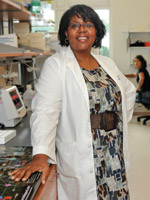
I was fortunate to have opportunities to do both undergraduate and dental school research in minority-targeted research training programmes. As a dental student, I recognised there were many oral maladies that were characterised as idiopathic. I reasoned early on that it would be difficult to treat disease without an understanding of cause. Research was the critical tool to help with understanding oral disease in a medically complex patient population, like the one that I saw.
Throughout my training, I have been the beneficiary of wonderful mentorship that has been critical to shaping my career.
I have experienced multiple eureka moments in my career. Among them were the findings that Kaposi’s sarcoma Herpesvirus (an infection linked to several cancers) was an oral pathogen, that a salivary gland disease that occurs in persons with HIV was associated with a polyomavirus and could be targeted therapeutically, that treating oral conditions could improve systemic outcomes in HIV, and that bacteria could drive viral infections and virus driven cancers.
I am proud when I see my students and trainees reach their aspirations, becoming dentists, achieving tenure, or becoming professors and deans of universities. Being elected to the National Academy of Medicine, being selected to NIDCR leadership, and being among the first to demonstrate that cancers in people who didn’t smoke or drink were associated with HPV have also brought me much satisfaction. Being involved with oral health care in Malawi and with the implementation of the first dental school in that country was also highly rewarding.
Jennifer’s top tip
Wanting to know the answer is the critical first step toward becoming a researcher and scientist.
Reference
https://doi.org/10.33424/FUTURUM462
Meet Donald
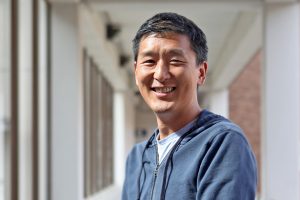
Dr Donald L. Chi
Professor and Associate Dean for Research, Lloyd and Kay Chapman Endowed Chair for Oral Health, School of Dentistry, University of Washington, USA
Fields of research: Paediatric Dentistry, Health Services
Funders: National Institute of Dental and Craniofacial Research, National Institutes of Health (NIDCR/NIH), Washington State Department of Health, CareQuest, US Health Resources and Services Administration
Glossary
Fluoride — a mineral used in dental care products, such as toothpaste and mouthwash
Health disparity — preventable difference in healthcare
Marginalised communities — groups of people that may be cut off from certain elements of society or who lack power and agency, often due to race, socio-economic status or physical, intellectual or developmental
Paediatric — relating to children’s healthcare
Socio-economic — related to social and economic factors
Donald is a paediatric dentist whose research addresses health disparities. He works with vulnerable and marginalised communities, targeting health inequality.
I work with low-income, socio-economically disadvantaged populations (e.g., those insured by Medicaid, which is healthcare provided by the state); minoritised subgroups (e.g., Alaska Native children, older adults of Korean or Latino/Hispanic descent); and medically compromised groups (e.g., individuals with cystic fibrosis, autism, intellectual and/or developmental disabilities, or other special healthcare needs). Many individuals from these vulnerable communities have similar experiences. These include difficulties accessing dental care, high sugar diets, and inadequate fluoride exposure – all of which pose risks for their oral health.
Children in these communities can face several problems with their oral health. Oral health inequities in childhood can lead to pain, missing teeth, hospitalisations, systemic diseases and missed school days. All of these factors have lifelong consequences, many of which are irreversible.
As dental researchers, we can help to generate new knowledge that can be used to develop interventions and policies aimed at promoting optimal oral health behaviours, making children and adults healthier.
Social and behavioural sciences are a central part of my research. My research shows that the social determinants of oral health matter; however, they are difficult to change through interventions. This is where all-important policies come into play.
An example of a success I’ve had in research is our work in Alaska Native communities, which is a culmination of many years of collaboration over time. We spent over six years co-developing an intervention to address sugared fruit drinks and applying for research funding. In 2018, we received an NIH grant that provided the resources needed to finalise the intervention. We worked hard to have everything ready to go in 2020 and then the COVID-19 pandemic hit. Though delayed, we were able to launch the intervention in September 2022, and we are currently completing data collection. I consider this project a success because of the deep, trust-centred partnerships that defined our relationships with the study communities, which allowed us to get through the acute phase of the pandemic and implement a programme we felt was an important step in addressing a public health challenge. I’m excited about the next steps.
It’s an absolute joy working with children though paediatric dentistry. One of the challenges in paediatric dentistry is that many high-risk children will continue to come back to the office with cavities, even after you spend a lot of time and effort to fix them.
This means that alternative approaches are needed for these children to help them avoid the recurring cycle of dental disease. This is where dental research comes into play – my research is aimed at breaking the disease cycle. Conducting research that has a positive impact on vulnerable families is something I am very proud of.
A career in paediatric dentistry summed up in one word? Opportunities.
Donald’s top tip
Hone your thinking and writing skills, read broadly, and when communicating with others, practise conveying the big picture first.
Meet Margherita
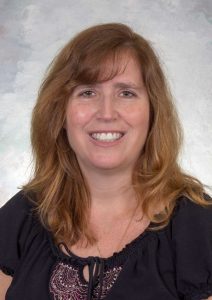
Dr Margherita R. Fontana
Clifford Nelson Endowed Professor and Professor of Dentistry Director, Global Initiatives Program in Oral and Craniofacial Health, Department of Cariology, Restorative Sciences & Endodontics, University of Michigan School of Dentistry, USA
Field of research: Cariology
Funders: National Institute of Dental and Craniofacial Research, National Institutes of Health (NIDCR/NIH)
Glossary
Biofilm — a thin layer of microbial cells
Caries — tooth decay, also known as cavities
Cariology — the scientific study of caries and its treatments
Health equity — when everyone has the same opportunities to achieve optimal health
In vitro — occurring in controlled environments, such as test tubes or petri dishes
As a cariologist, Margherita researches tooth decay. Currently, she is conducting clinical studies to investigate caries risk in young children.
I pursued clinical research to understand how we can improve health and well-being and reduce health disparities. It is essential to look at information and test products and strategies directly with humans, including as diverse a group as possible, so that findings from clinical research can be applicable to everyone. Clinical research is vital for our understanding and treatment of diseases, and for achieving health equity.
We know that the risk of getting cavities as a child can be predicted from as early as aged one, before children have many teeth.
Questions that a parent can easily answer during medical paediatric visits early in their child’s life can help determine the risk of their child of getting cavities years later. This offers an opportunity for parent and medical and dental providers to target preventive interventions to those at higher risk, with the goal of keeping children healthy as they grow.
We have developed caries risk tools for early childhood and are now focusing on the school age years into early adolescence. We are interested in finding out not only the risk of developing future cavities in order to prevent them, but the path to getting cavities (e.g., where will the cavities develop, and how fast in the future). We are also looking at how oral risk factors interplay with other health related behaviours, and the development of these behaviours over childhood. This will help us understand where we may be able to intervene more cost-effectively to decrease risk and improve patient-related outcomes, and opportunities for interprofessional collaboration in health management.
We are conducting in vitro studies of biofilms. Chemical and biofilms caries models are important to understand how biofilms react with tooth surfaces and how cavities develop in response to different conditions. We can also test the impact of potential treatment agents, to help us identify promising ones to be later tested in clinical studies and, eventually, made available to the public.
A career in cariology relies on many years of study, but it is very rewarding. I have been able to work and collaborate with wonderful communities of people in different parts of the world, all committed to improving the health of children worldwide. I have seen our work impact policies to improve health, and I have seen the direct positive impact on families.
What one word sums up a career in cariology? Impactful.
Margherita’s top tip
Follow your dreams and take advantage of opportunities as they happen in life.
Meet Ophir
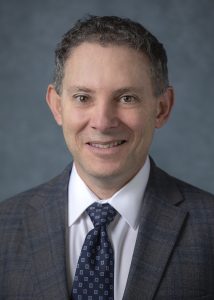
Professor Ophir Klein
Professor of Paediatrics, Cedars Sinai, California, USA
Fields of research: Paediatrics, Medical Genetics
Funders: National Institute of Diabetes and Digestive and Kidney Diseases, National Institute of Dental and Craniofacial Research, National Institutes of Health (NIDDK/ NIDCR/NIH), California Institute for Regenerative Medicine (CIRM), Tobacco-Related Disease Research Program (TRDRP), private foundations
Glossary
Genetics — the scientific study of genes
Craniofacial — relating to the cranium (skull) and face
Paediatric — relating to children’s healthcare
Phenotypic — relating to the physical characteristics of an organism
Stem cells — unspecialised cells that are used as the ‘raw material’ to produce specialised cells
Ophir is a paediatrician and medical geneticist. His research focuses on craniofacial development.
Our lab is generally interested in how organs form in embryos and how they renew and regenerate in the adult. Specifically, we are studying how teeth form and how the lining of the mouth (the oral mucosa) can heal so quickly and without scarring.
To study craniofacial and dental birth defects, we perform a variety of studies, including using mouse and zebrafish animal models, experiments with cells derived from patients, and genetic and phenotypic analyses of the patients themselves. By integrating all of these types of data, we can obtain a fuller understanding of the mechanisms underlying birth defects.
By learning how stem cells are able to fuel both normal turnover of tissues as well as repair of injuries and other types of damage, we are laying a foundation for harnessing the regenerative power of these amazing cells and thinking about how to use them therapeutically. I am very optimistic that stem cells will have a significant impact on healthcare in the long run. We still have a lot to learn, but as we learn more about the remarkable abilities of these cells, it seems very likely that they will become an important part of our therapeutic toolkit.
In medical genetics, there are a lot of ‘diagnostic mysteries’ – unlike many other areas of medicine, it is not immediately clear what the underlying problem is that is causing the patient’s condition. This is often a huge challenge but also what makes the field so interesting and exciting.
The biggest highlight of my career has been the opportunity to work with and mentor so many talented, inspiring young people – it is the most fun part of my job and what gets me up every morning.
I studied Spanish before studying medicine and genetics. I wish I could say that this was all part of a master plan that I developed at a young age! But honestly, I just did what seemed fun and interesting at each point in my career. When I started college, I was fascinated by language and literature and chose to get a degree in Spanish. When I started to work in a lab, I realised that science and medicine were even more exciting to me, so I pivoted to a new field.
What one word sums up a career in medical genetics? Captivating.
Ophir’s top tip
Medical and scientific training will be difficult and challenging at times, and they’ll require some sacrifices, but if you love what you’re doing, it is definitely worth it. If you can, try not to worry too much about what is going to happen in the distant future, and focus on the journey.
Meet Darnell
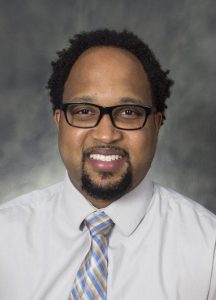
Dr Darnell Kaigler
Director of Kaigler Lab, Major M. Ash Collegiate Professor of Dentistry, Department of Periodontics & Oral Medicine, Department of Biomedical Engineering, University of Michigan School of Dentistry, USA
Fields of research: Regenerative Medicine, Stem Cell Biology and Therapy
Funders: Burroughs Welcome Fund, Oral-Maxillofacial Surgery Foundation, National Institute of Dental and Craniofacial Research, National Institutes of Health (NIDCR/NIH)
Glossary
Craniofacial — relating to the cranium (skull) and face
Periodontics — the branch of dentistry related to gum disease
Randomised controlled trial — a study in which an intervention is randomly assigned to people within a population. A control group is also randomly selected, and the two groups are studied over time to determine the effect of the intervention
Stem cells — unspecialised cells that are used as the ‘raw material’ to produce specialised cells
Darnell leads the Kaigler Research Group, which is focused on the development of methods to regenerate tissue.
My lab conducts research on stem cell-based therapies for the regeneration of oral tissues. We are currently trying to determine how stem cells from the body can be procured, cultivated and re-introduced to the body to repair, regenerate and reconstruct diseased and damaged tissues.
Stem cell therapy can enable bone regeneration by turning into bone cells, which ultimately form bone tissue. Our work focuses on understanding how to best direct that process.
Our successes include having conducted clinical trials which have demonstrated that stem cell therapy for regeneration of jawbone and craniofacial bone tissue is safe and effective. Our studies were the first randomised, controlled, clinical trials in the US to show this.
This stem cell therapy could have great impact on people and their everyday lives by enabling treatment of debilitating conditions for which there are currently limited treatment options.
The biggest challenge in my work is being able to maintain a high level of knowledge and clinical skill in periodontics, while also sustaining a productive and innovative research programme.
Using stem cell therapies to successfully treat patients in our clinical trials and seeing the impact it has had on patients are highlights of my career.
What one word sums up a career in periodontics? Awesome.
Meet Azeez
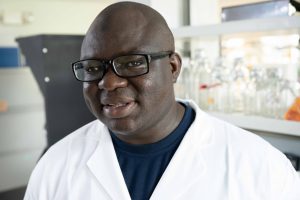
Dr Azeez Butali
Gilbert Lilly Endowed Professor of Diagnostic Sciences, College of Dentistry, University of Iowa Health Care, USA
Fields of research: Genetics, Genomics and Ethical, Legal and Social Issues (ELSI)
Funders: National Institute of Dental and Craniofacial Research, National Institutes of Health (NIDCR/NIH)
Glossary
Anomaly — an abnormality or variation
Craniofacial — relating to the cranium (skull) and face
Epidemiology — the study of patterns and factors in health and diseases
Genetics — the scientific study of genes
Orofacial — relating to the mouth and face
A researcher in dental and craniofacial genetics, Azeez also directs the African Craniofacial Anomalies Network.
My research has included looking at nonsyndromic clefts in populations of African descent. A non-syndromic cleft is a birth defect where the nasal and oral cavities have not divided completely. Approximately 1 in every 2000 live births are affected by the condition.
The African Craniofacial Anomalies Network is a collaboration between scientists in Ghana, Ethiopia, Kenya, Nigeria and Rwanda. We aim to train and build capacity in Africa for research into dental and craniofacial diseases, to investigate the genetics and environmental causes of dental and craniofacial diseases, and to create opportunities for inter and transdisciplinary and global research. This type of collaboration is important in enabling us to understand the genetic diversity that exists in Africa and how this can help us understand the causes of dental and craniofacial diseases.
In looking at the role of genetics in nonsyndromic clefts, my lab has discovered three cleft palate genes and genes for a dental syndrome.
Genetics is a rapidly evolving field, and there is need for constant training and retraining to keep abreast with the dynamic research environment. It requires a close tab on the literature and collaboration with other experts in the field.
I undertook my PhD in genetic epidemiology after obtaining my dental degree to understand the ‘why’ and ‘how’ of dental and craniofacial diseases beginning with orofacial clefts.
My career highlights include having successfully established a research team and network that has contributed substantially to dental and craniofacial research through the discovery of three clefting genes and one dental syndrome gene. I have produced over 90 peer reviewed articles and presented over 200 reports at national and international meetings! I have also successfully trained five PhD students and have three PhD students in my lab, currently. I’m proud to be provide mentoring to several dental students, undergraduates and high school students.
What phrase sums up a career in dental and craniofacial genetics? Be intentional.
Azeez’s top tips
• Trust the journey, focus on the clinical skills, and aspire to become the best dental scientist that you can be.
• Open yourself up for learning and mentoring.
Meet Niki

Dr Niki Moutsopoulos
Associate Scientific Director, Tenure Track/Assistant Clinical Investigator (TT/ACI) Faculty Development, Chief Oral Immunity and Infection Section, National Institute of Dental and Craniofacial Research, National Institutes of Health (NIDCR/NIH), Maryland, USA
Fields of research: Immunology, Inflammation and Microbiology
Funder: National Institute of Dental and Craniofacial Research, National Institutes of Health (NIDCR/NIH)
Glossary
Microbe — microorganisms which include viruses, bacteria, fungi and parasites
Oral mucosal — the mucous membrane inside the mouth
Periodontitis — gum disease that has progressed to the bone that surrounds the tooth
Niki leads the Moutsopoulos Lab, which studies oral mucosal immunity in health and disease.
Food, air and many microbes enter our mouth constantly. Yet, the immune system of the mouth manages to protect us, so these outside elements do not cause harm, injury or disease. Oral mucosal immunity is the field that focuses on how the immune system in the mouth has evolved to protect us from the outside without causing constant injury, inflammation or disease.
We take a bedside-to-bench approach to studying oral mucosal immunity. We aim to understand oral diseases in people and help treat them. For this reason, we start our studies looking at oral health problems, which we aim to solve, so our work can help patients.
Periodontitis is a very prevalent disease – both in the US and worldwide. In its severe forms, it is estimated to affect close to 8% of the general population.
Research into periodontitis in our lab combines many types of work, ranging from seeing patients in the clinic to performing wet lab experiments, analysing data and applying computational approaches. We also spend a lot of time discussing data with co-workers and collaborators, preparing presentations and writing papers. There really is no ‘typical day’!
While it’s too early to assess the long-term impact of our work, we are thrilled that our lab has been able to partner with scientists and clinicians from many fields with the idea that diverse perspectives can help tackle complex questions in biology and medicine. I am also especially proud of the environment we have built in the lab over the past years with help from fantastic co-workers and staff. We have been able to foster a welcoming environment where enthusiastic junior scientists are encouraged to develop their talents and grow into independent investigators.
Niki’s top tips
• Challenge yourself and try to ask important questions.
• Find mentors willing to support and push you forward.
Meet Caroline

Dr Caroline Shiboski
School of Dentistry, University of California San Francisco, USA
Fields of research: Orofacial Science, Oral Medicine and Epidemiology
Funder: National Institute of Dental and Craniofacial Research, National Institute of Arthritis and Musculoskeletal and Skin Diseases, Eunice Kennedy Shriver National Institute of Child Health and Human Development, National Institutes of Health (NIDCR/NIAMS/NICHD/NIH), Eli Lilly
Glossary
Human immunodeficiency virus (HIV) — a condition where the body’s immune system is unable to fight off infection or disease
Orofacial — relating to the mouth and face
Sjögren’s disease — a condition where the body attacks glands that secrete fluid, such as the salivary glands
Tuberculosis (TB) — an infectious bacterial disease that most commonly affects the lungs but can affect any part of the body
Caroline studies how immune dysfunction can manifest in oral health problems.
Epidemiology helps us to understand the causes of diseases by trying to identify risk factors that may be associated with certain diseases. I chose to study epidemiology when I decided to specialise in oral medicine, which is like dermatology of the mouth, to better understand the many diseases that can happen in the mouth aside from tooth decay.
There are many diseases that affect the whole body, including the mouth. By looking inside the mouth, we can find clues to diagnose some of these diseases. It is like pieces of a puzzle with some of the pieces being found in the mouth.
The immune system can be weak. For example, when someone has HIV or if they have to take medication to lower the immune system after an organ transplant so the body will not reject it. If a person’s immune system is weak, that person may develop more infections (from either bacteria, viruses or fungi), and some of these infections can happen in the mouth. On the other hand, the immune system can also be overactive when a person has what is called an autoimmune disease. There are many different autoimmune diseases with each one affecting a different part of the body that is being attacked by overreactive immune cells. This can happen in the mouth, when immune cells attack the lining of the mouth, causing ulcerations or sores. In the case of Sjögren’s disease, it can also happen to salivary glands, when the immune system attacks the glands that produce saliva, preventing them from doing so and resulting in severe dryness in the mouth. When a person has little to no saliva, it can cause them to have very bad tooth decay or to develop yeast infections often. It also affects the way one can taste and swallow food.
I conducted studies in Zimbabwe looking at the progression of HIV among women. We found that women with more advanced HIV (i.e., who had fewer immune cell which can be measured by doing a blood test) had a much higher risk of having a yeast infection in their mouth (called oral candidiasis). We also did a similar study among adults with HIV and tuberculosis (TB) and found that those with TB were more likely to have oral candidiasis. These findings can be used to help screen for both HIV and TB (case-finding) in resource-poor settings where it is not feasible to do expensive blood tests on a large number of people to screen them.
My career highlights include having the opportunity to work with multidisciplinary teams such as HIV physicians and statisticians for my work in HIV, rheumatologists, ophthalmologists, oral pathologists, and statisticians for my work in Sjögren’s disease. I also had the opportunity to lead a team to develop and validate classification criteria for Sjögren’s syndrome (as it was called previously). Because Sjögren’s disease does not yet have any effective treatment, clinical trials are needed to find good treatment for it, and participants need to be classified correctly as having or not having the disease to be able to join a clinical trial. Thus, the work on developing classification criteria for Sjögren’s was very much needed.
What one word sums up a career in orofacial science? Multidisciplinary.
Caroline’s top tip
Don’t get into a lot of school debt to go to graduate school too early. Explore options for scholarship, training grants, etc.
Meet Janice
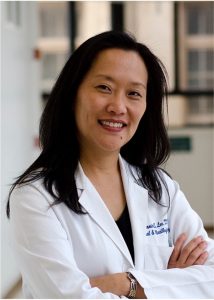
Dr Janice Lee
Clinical Director, Craniofacial Anomalies and Regeneration Section, NIH National Institute of Dental and Craniofacial Research, Maryland, USA
Field of research: Craniofacial Anomalies and Regeneration
Funder: National Institute of Dental and Craniofacial Research, National Institutes of Health (NIDCR/NIH)
Glossary
Craniofacial — relating to the cranium (skull) and face
Genotype — all the genetic material within an organism
Loeys-Dietz syndrome — a genetic disorder that affects connective tissue (which helps structure other tissues and organs)
Phenotype — the physical characteristics of an organism
Janice is a surgeon scientist. She leads the Lee lab, focusing on craniofacial research.
My work involves a range of conditions, some more prevalent and impactful on the patient than others. Common craniofacial conditions, such as underbite or overbite, have a global prevalence of 6% and 19.5%, respectively. These conditions can show up as you are growing and hit during puberty. Some of these are severe enough that they require facial surgery. Cleft lip and palate is the most common craniofacial difference seen at birth and occurs about 1.7 times in every 1,000 live births. Craniosynostosis (early fusion of the cranial bones which causes the skull shape to be abnormal) occurs in 1 in 2,500 live births. Hemifacial microsomia (in which one side of face, including eye, ear, lower jaw and facial nerve does not develop properly and causes facial asymmetry) happens in 1 in 3,500-5,600 live births.
Currently, my lab is studying skeletal malocclusions (severe underbite and overbites) to understand the genetics and shape changes, so we can predict who will develop the condition. It usually runs in families and can be a ‘family trait’.
Using 3D computational analysis, specifically geometric morphometrics analysis, we are able to examine craniofacial development and compare the differences in healthy groups and individuals with specific diseases. This method is a form of phenotyping and is objective and quantitative; we can measure the differences. We use scans of the craniofacial skeleton or 3D photos of the face. With this analysis, we can see developmental differences that may be caused by genetic mutations. This helps us link the effects of a mutation to the impact on facial development, linking genotype to phenotype.
My patients are partners in my research. While caring for patients and their conditions, my surgeries can help one patient at a time. However, my research enables me to understand the condition in more detail, informs earlier diagnosis and predicts craniofacial development. This means we can treat or prevent the condition without invasive treatments like surgery. To do this, my research relies on a strong partnership with patients who contribute their time, data and experience to help me find answers.
My lab’s success includes deciphering differences in craniofacial development between very small genetic changes (variants) in Loeys-Dietz syndrome. We have developed new 3D landmarks and a healthy craniofacial data set so that we can objectively compare them to disease groups. This will be available to the public and hopefully replace the older 2D methods and norms. We have also used computational methods to predict craniofacial growth.
Unique multidisciplinary collaborations are vital for my research. I work with bioengineers, computational and data scientists, geneticists, nurses, surgeons, endocrinologists, radiologists, developmental biologists, the list goes on…
The challenge of being a surgeon scientist is that there is not enough time to do everything, such as operate, care for patients, and do my lab research! Talking to patients about the advances we are making in my research that will help them and their families offers huge rewards.
What one word sums up a career in craniofacial research? Fulfilling.
Janice’s top tips
• It’s never too early to talk to clinician-scientists who are doing what you find interesting.
• Explore and find what excites you the most… then work doesn’t feel like work.
Pathway from school to dental research
• A focus on biology, chemistry and mathematics at school and post-16 years will provide a good foundation for a dental degree.
• Collegedunia provides details about studying dentistry in the US.
• UCAS provides more information about degree entry requirements for the UK.
• There are many opportunities to try dental research with the NIH and at colleges and universities across the US, in low and middle income countries, and elsewhere:
– NIH training opportunities from high school and beyond.
– The University of Michigan School of Dentistry offers a variety of programmes for people interested in pursuing dentistry.
– The University of Iowa provides Secondary Student Training Program Courses (SSTP).
– The Cedars Sinai also offers programmes for students.
• Azeez advises participating in summer experiences at the NIH and genetics labs, while Janice recommends the Office of Intramural Training and Education’s website for summer internships and other programmes.
• Jennifer highlights the huge range of fields of science that dental research involves: “Genetics, oncology, developmental biology, engineering, neuroscience, microbiology, immunology, biochemistry, physiology, public health, data science/computational biology, clinical research, and health disparities just to name a few…,” she says. The discipline that appeals to you will impact the courses you take at university level and the path you take beyond that.
Explore careers in dental research
• Donald suggests finding a dentist to shadow. This could be a dentist who runs a full-time practice or a dentist in an academic setting. Caroline adds how valuable it is to talk to people in the profession to hear about their work.
• Margherita advises finding great mentors, and joining scientifically strong groups. For example, in her speciality, there is the European Organisation of Caries Research and the American Academy of Cariology.
• There are many societies to explore:
– Caroline recommends the American Academy of Oral Medicine and the International Association for Dental Research.
– Ophir highlights that the American College of Medical Genetics and Genomics, the American Board of Medical Genetics and Genomics and the American Society of Human Genetics all have excellent websites that are worth exploring.
– Janice mentions the American Cleft Palate-Craniofacial Association and the Society of Developmental Biology.
Do you have a question for Jennifer and the team?
Write it in the comments box below and Jennifer and the team will get back to you. (Remember, researchers are very busy people, so you may have to wait a few days.)
Learn more about how dental research is improving oral health:

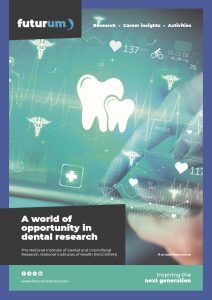
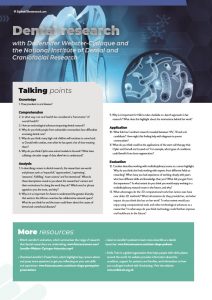
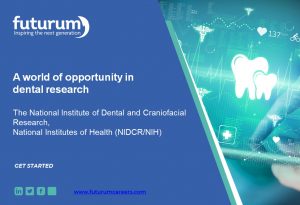

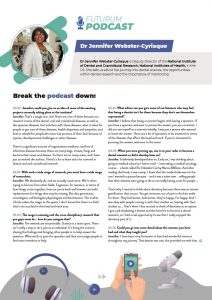
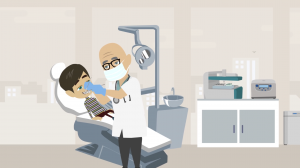
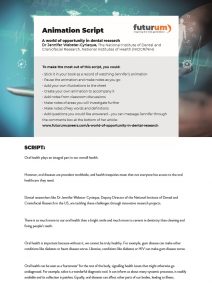


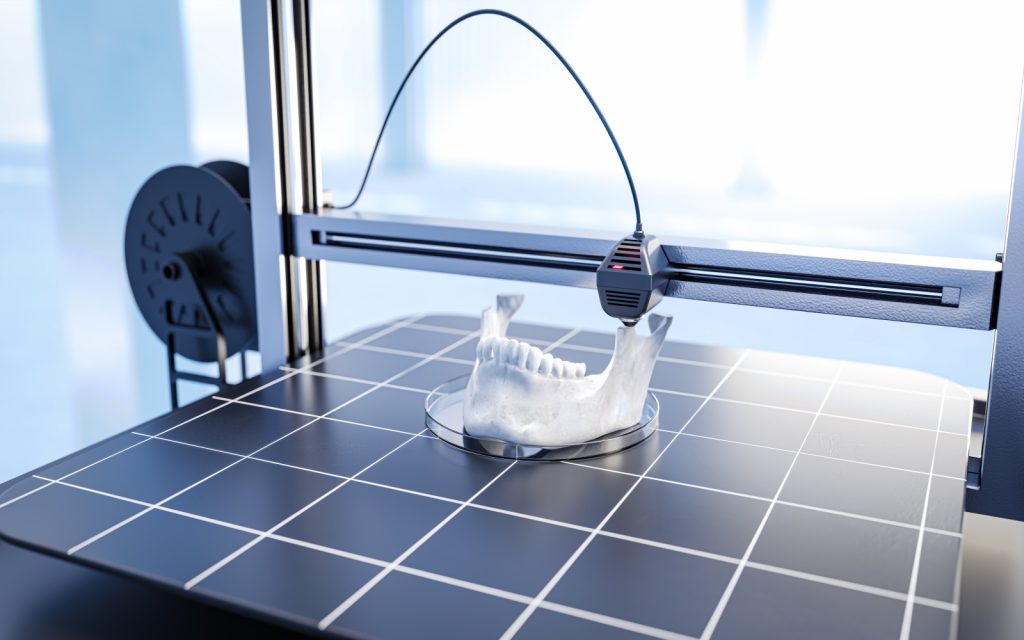


0 Comments